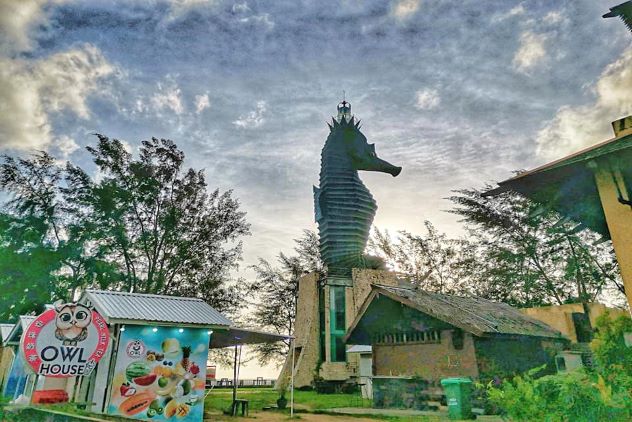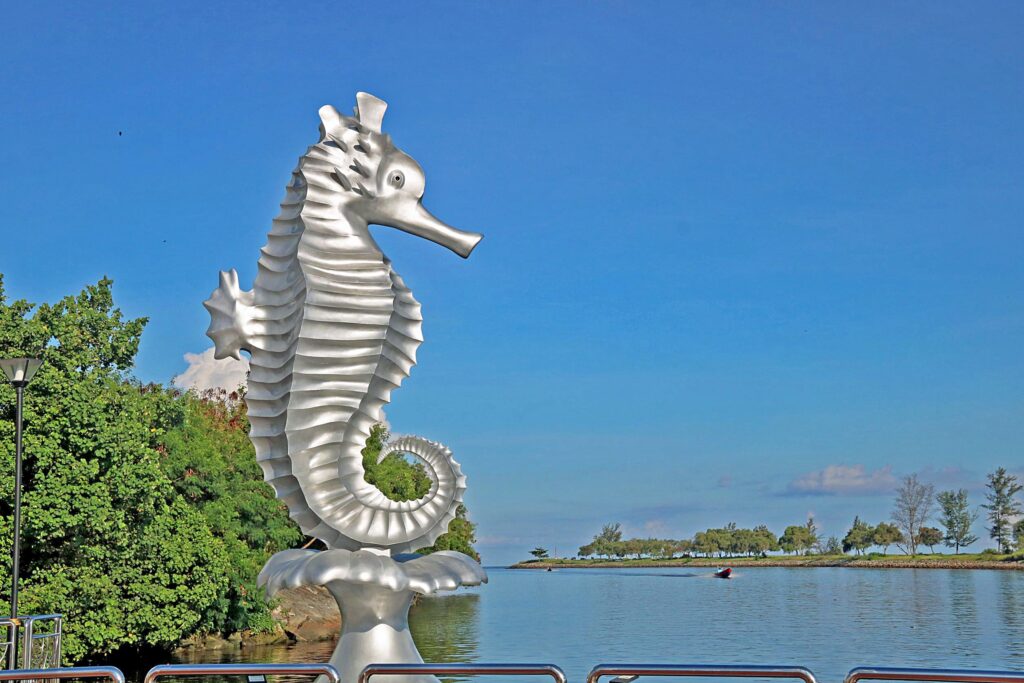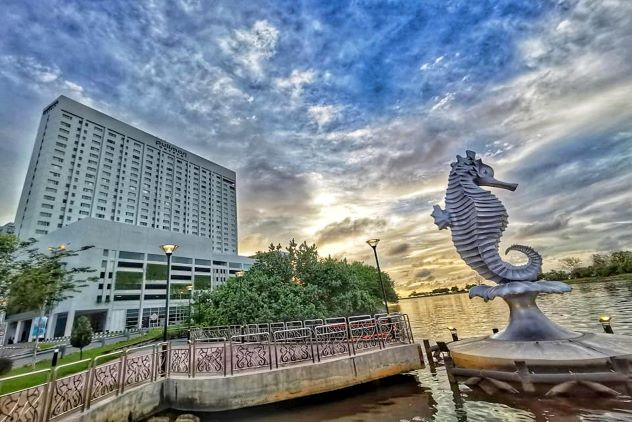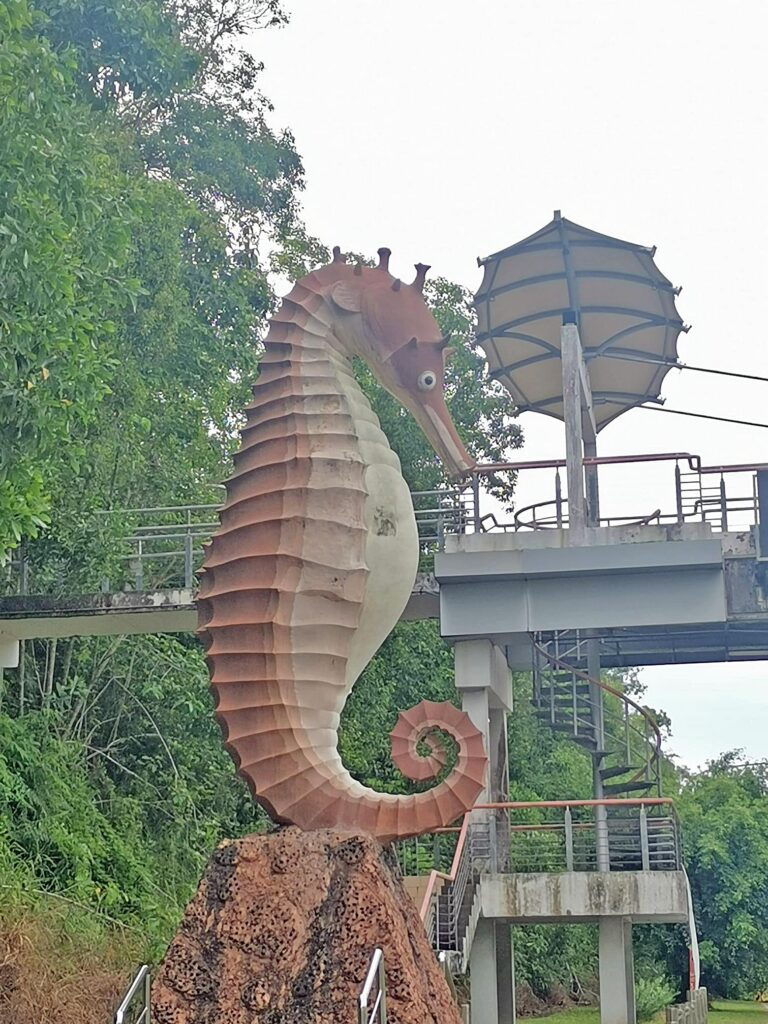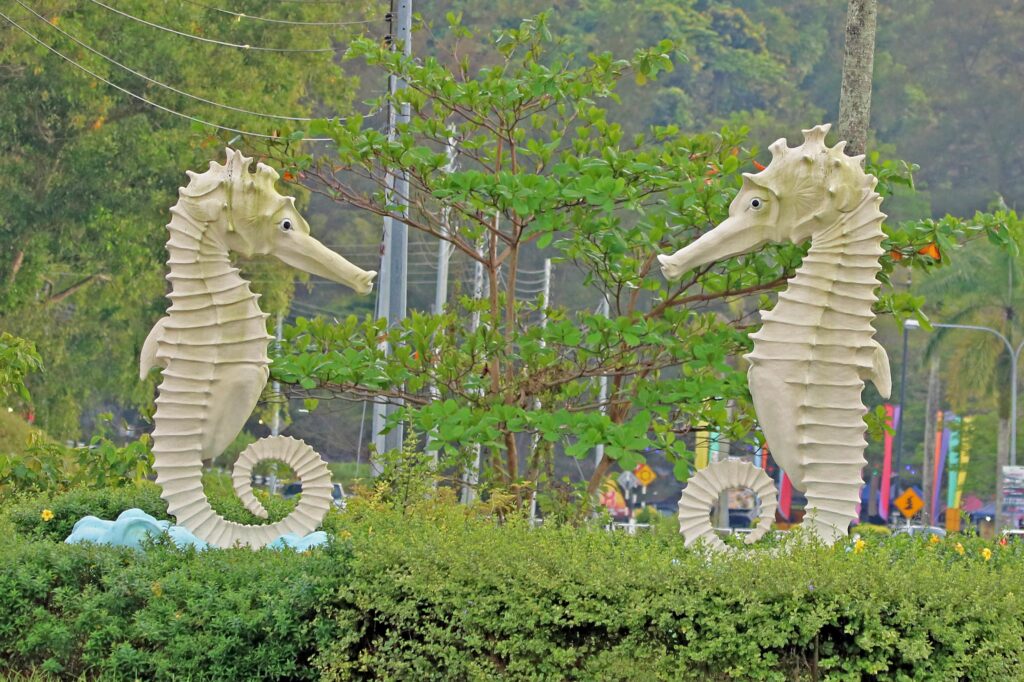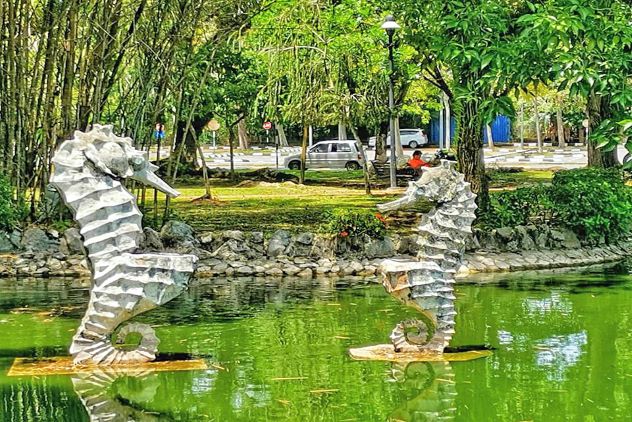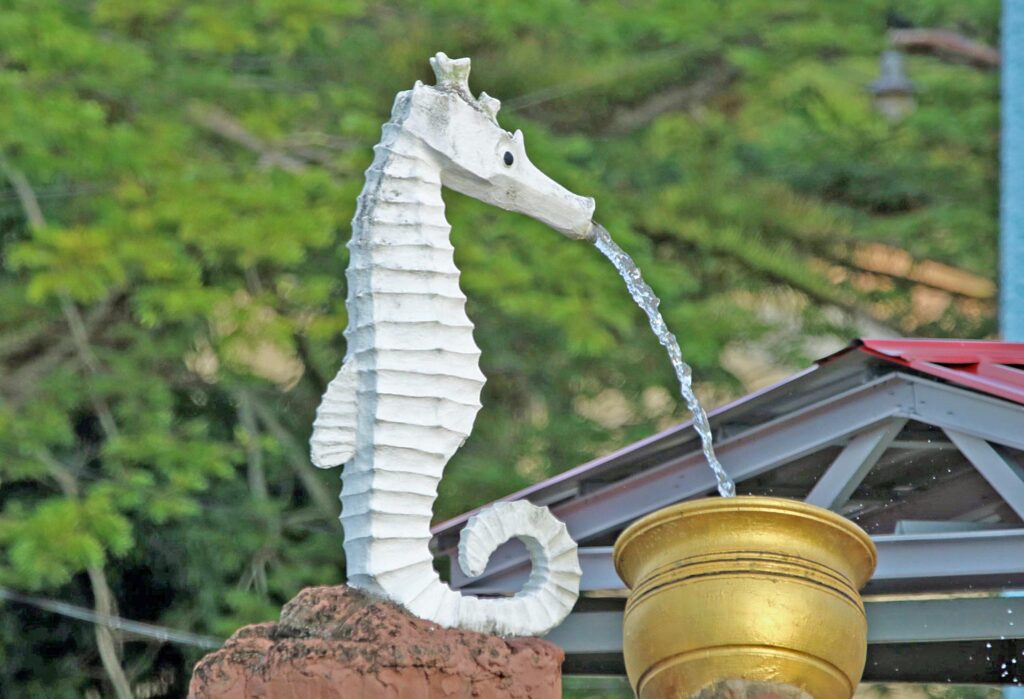The seahorse is Miri’s official mascot. It is little wonder that you can see seahorse mascots all over the city.
The biggest seahorse in Miri is the iconic 25 metre tall seahorse lighthouse located at Coco Cabana. It is one of the top favourite photography spots in the city.
Another very popular seahorse is the one located at Miri Waterfront. It is a sight to behold especially during evening sunsets.
The pair of seahorses at Taman Awam are lovely too but I always think that they look like pregnant seahorses, haha!
The seahorses within the roundabout near Telang Usan Hotel are quite nice too.
But the seahorses in Miri City Fan look so forlorn and rundown. Maybe something should be done about them.
The seahorse at SMK St Joseph is unique as it has a water spouting feature with water spilling from the mouth of the seahorse into a pot.
Seahorses are truly unique creatures. Besides their unusual equine shape, they are among the only animal species on Earth in which the male gets pregnant and bears the unborn young. Unlike most other fish, they are monogamous and mate for life.
Instead of growing the baby seahorses inside their belly in a uterus, the seahorse dads will carry the babies in a pouch.
To produce babies, seahorses have to mate first. Seahorse mating is truly a sight to behold. Males and females dance around one another and flutter their fins, and they may dance together over several days before they actually mate.
When they have decided they like each other and are ready to mate, the seahorse females swim towards the surface of the water, and the males follow. The females then put their bright orange eggs into the pouch of the males through the hole at the top of the pouch. Once the eggs are safely inside, the males will add their sperm and shut the opening. The eggs are fertilised by the sperm, and then start developing into baby seahorses.
With that, the job of the seahorse mum is done! She swims off, and leaves the father to take care of the growing babies. Inside the pouch, the babies grow eyes, tiny snouts, and little tails. It takes about 20 days for the babies to develop, safely tucked away from other animals that might want to eat them.
Male seahorses giving birth is very dramatic. You can watch a video of seahorse birth here:

The male opens the hole in his brood pouch, and with violent jerks, the male squeezes all of the babies out. The babies shoot out very quickly in a spectacular display.Some species of seahorse can give birth to more than 1,000 babies at once!
After the babies are born, the seahorse dad does nothing more for them. They are on their own and hide from predators. The seahorse father does not eat until several hours after he has given birth. However, if the babies are still hanging around him after that, they may become a tasty meal for the father.
It’s tough being a baby seahorse. Of the hundreds of babies that the male gives birth to, only a few will survive to become adults and have babies of their own.
 CY@CY Says Welcome to my dreamscape. Where a Lim is also a Ling.
CY@CY Says Welcome to my dreamscape. Where a Lim is also a Ling.
